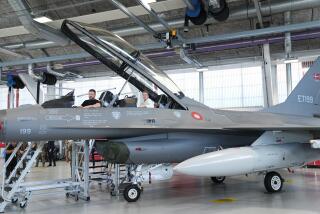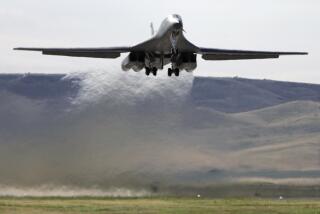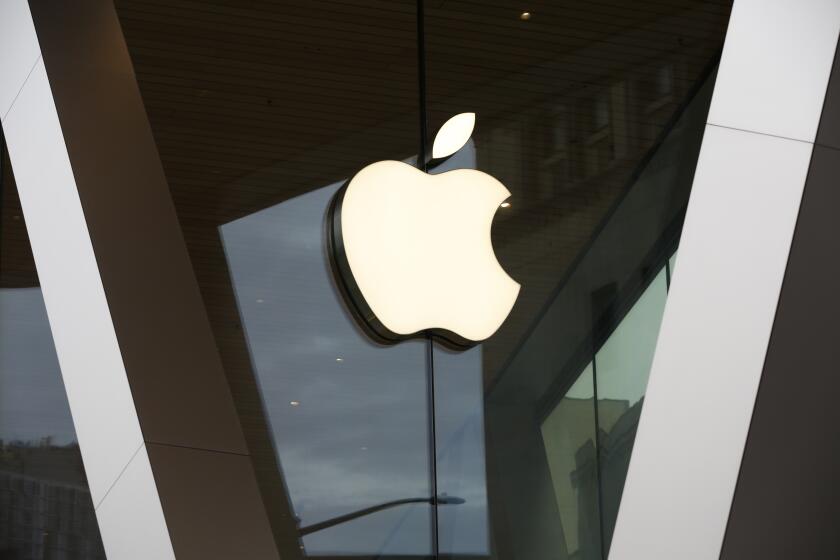30 years after the B-2 took flight, Northrop is applying lessons to a new stealth bomber
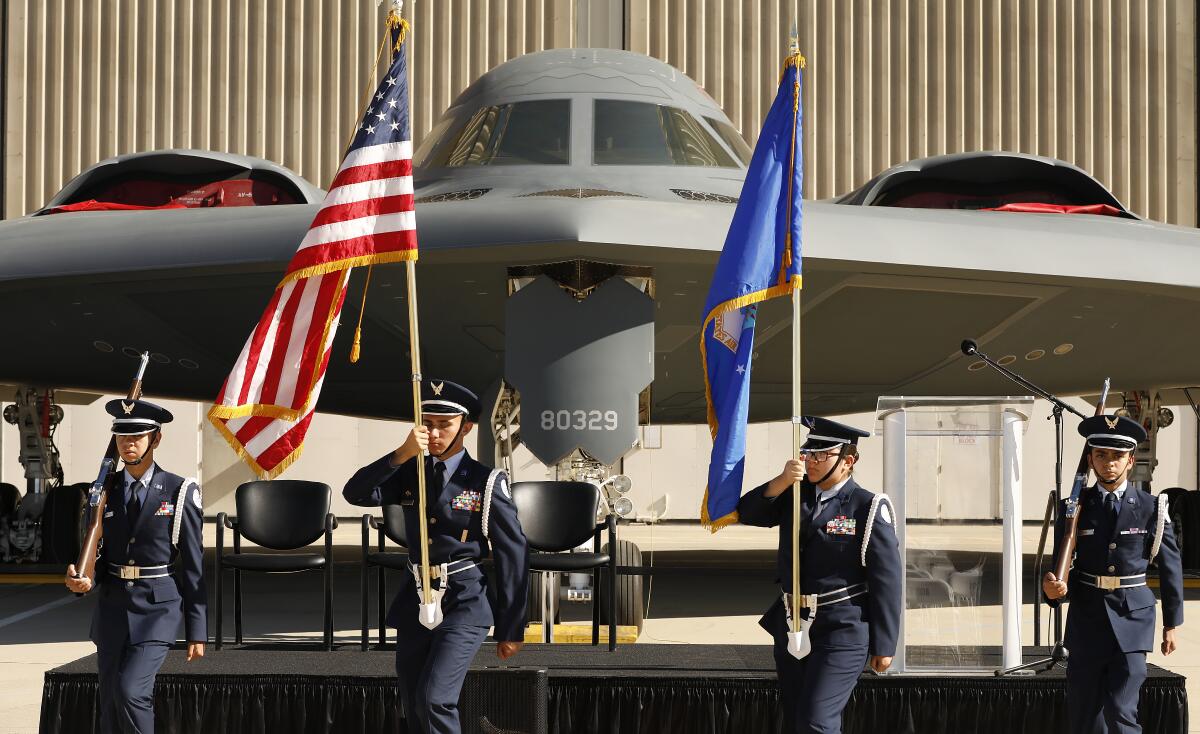
- Share via
PALMDALE, Calif. — At the dawn of the stealth age, the technology involved in making a plane nearly invisible to radar was mysterious and, to some critics, dubious. There were concerns that the special coating on the U.S. Air Force’s new stealth bomber would melt in the rain.
Nonetheless, 30 years ago the first B-2 bomber took to the air from the Plant 42 runway in Palmdale, Calif. Aviation visionary Jack Northrop’s dream of a “flying wing” plane — one with no tail — was realized, Air Force Maj. Gen. James Dawkins Jr. recalled Tuesday at a commemorative event at Northrop Grumman Corp.’s factory here.
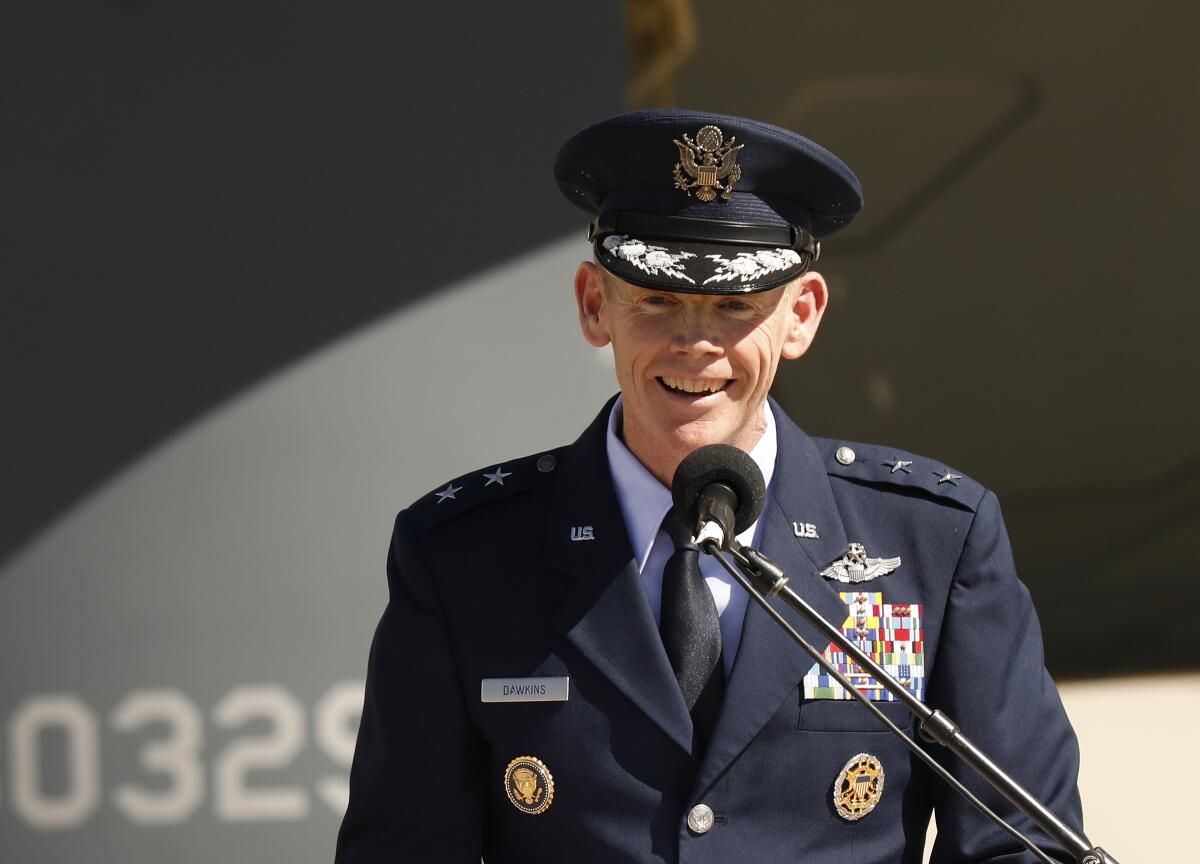
Today, Northrop is ramping up development of a replacement stealth bomber, the B-21. Dawkins spoke near two beige buildings, built in the last year, which are part of a contract likely related to that next generation of aircraft. Signs of expansion at the facility were visible Tuesday; behind the gathered crowd, a construction crew used equipment to move mounds of dirt into a dump truck.
Northrop Grumman officials and defense analysts say the defense giant will take advantage of lessons learned from the B-2 and use them in its work on the B-21 bomber, which will be assembled at the Palmdale site. That plane could fly for the first time in 2021 and is expected to enter service in the 2020s.
The B-21 is expected to utilize some crucial technologies that were already far along in development. A rendering of the plane released in 2016 by the Air Force suggests the B-21 will be somewhat similar in shape to the B-2.
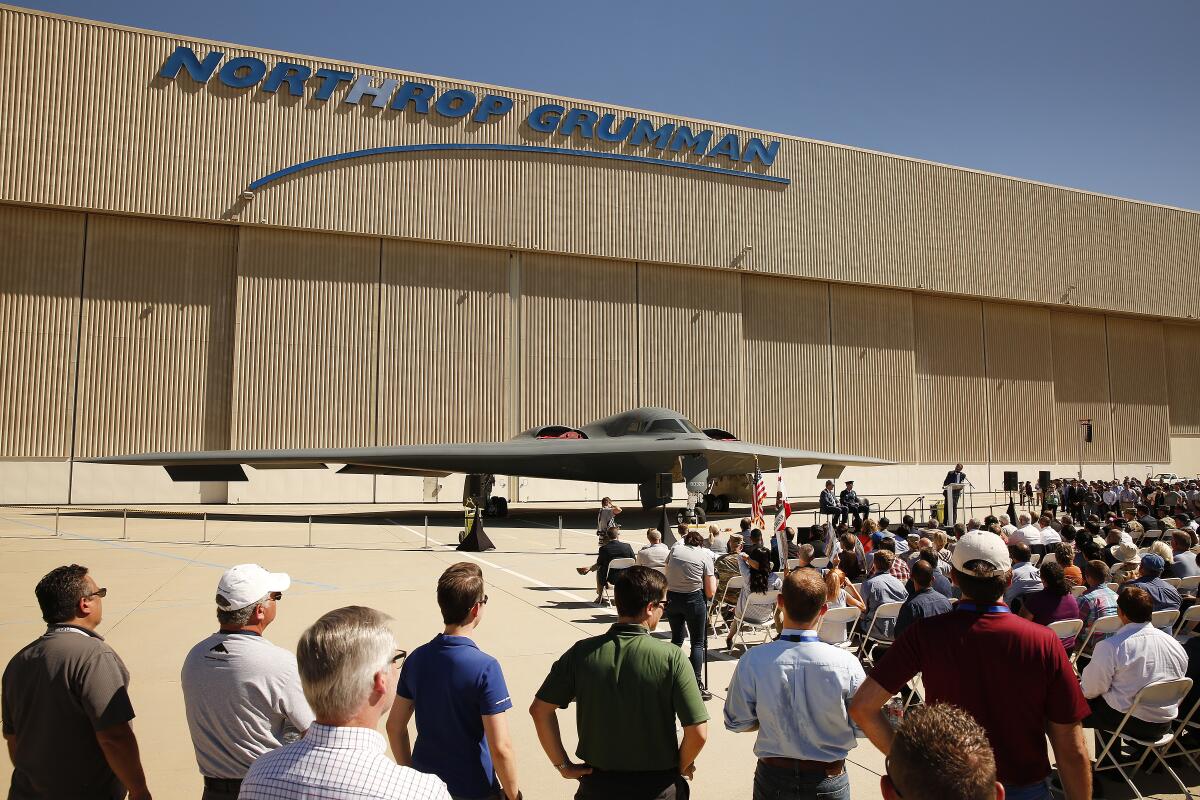
“The B-2 will be setting the path course for the B-21,” Janis Pamiljans, president of Northrop Grumman’s aerospace systems sector, said during the event. “What we’ve learned on B-2 are finding themselves baselined in the design for B-21 for supportability, sustainability, mission capable rate.”
The B-21 program is being managed by the Air Force’s Rapid Capabilities Office to cut red tape, and any design changes — which can slow progress and increase costs — must be approved at higher levels than usual, according to the Air Force.
“And in order for it to be successful, they have to avoid mistakes that were made on the B-2,” said Loren Thompson, military analyst at the Lexington Institute think tank in Arlington, Va.
The B-2 bomber was designed to give the U.S. Air Force long-range, penetrating strike capabilities with little or no risk of detection or interception. The Air Force originally intended to buy 132 B-2s. But costs ballooned and the Cold War ended just before production started. Even the Defense Department questioned whether it needed so many planes. In the end, only 21 aircraft were delivered to the Air Force, at a per-plane manufacturing cost of $1 billion in 1998 dollars.
The Pentagon has said it intends to buy 100 B-21 bombers by the mid-2030s for at least $80 billion. Northrop’s bid was for a per-plane cost of $511 million, according to an independent cost estimate, though the exact amount is classified. The B-21 is intended to replace the B-2 and the 1980s-era B-1B. The new bomber could eventually replace the 1950s-era B-52, which the Air Force continues to value for its large airframe that can handle massive weapons loads and repeated electronics upgrades.
“The B-21 cannot cost what the B-2 bomber cost,” Thompson said.
Even though some fears of the planes’ fragility proved overwrought, the B-2 program has been criticized for the extensive cost of maintaining their stealth technology. The special coating absorbs radar waves as they hit the plane, whose shape is also optimized for stealth.
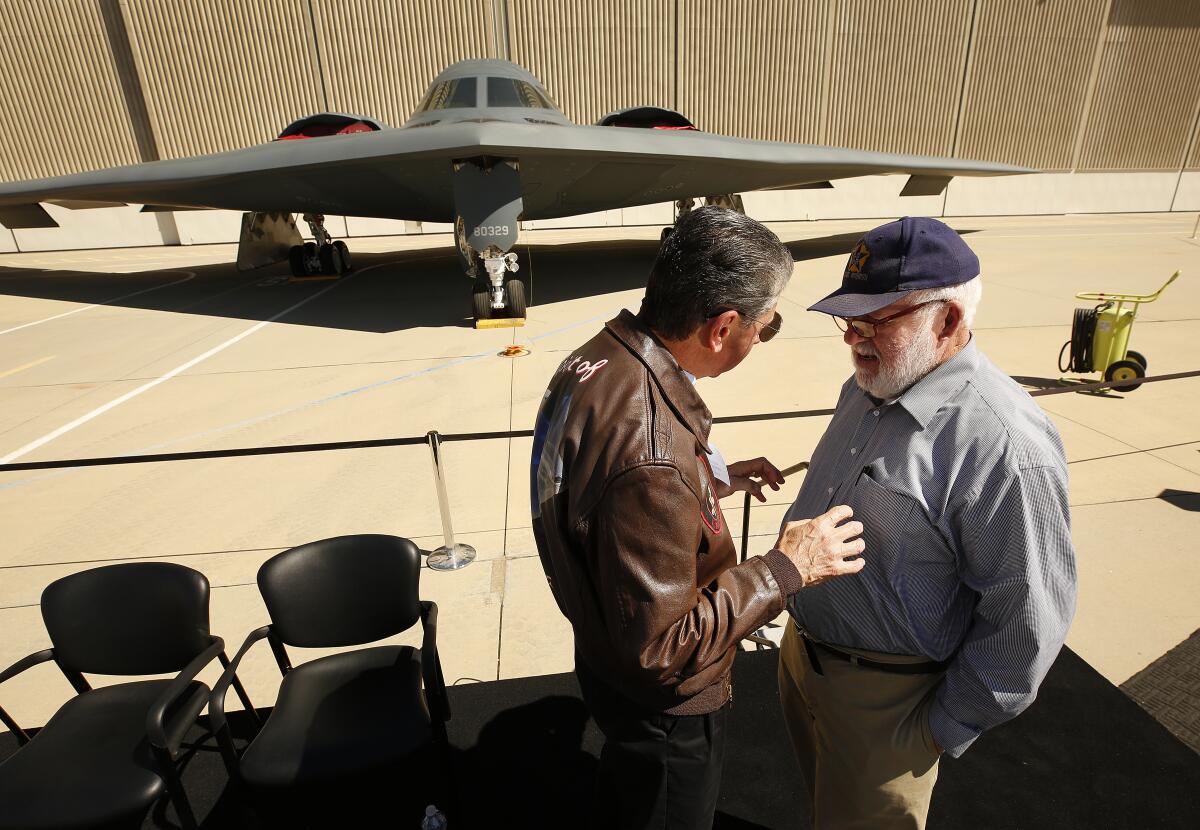
The B-2s must be overhauled every nine years, and that maintenance can take a year to finish and cost an average of $60 million. Today the maintenance also includes modifications and upgrades to the bombers’ avionics, antenna technology and software systems that help with pilot situational awareness, said Richard Sullivan, vice president and B-2 program manager at Northrop Grumman.
“The systems we use today have improved all aspects of performance from the first B-2s that rolled out 30 years ago,” he said.
Northrop’s involvement in the F-35 fighter jet program likely expanded the company’s knowledge of how to integrate complex electronics on an aircraft while maintaining the plane’s stealth capabilities — aspects that will likely help ease the B-21 into production, said Thompson of the Lexington Institute. The defense company produces center fuselages for the F-35 fighter jets at a highly-automated production line at its Palmdale facility.
Since the assembly line opened in 2012, more than 560 center fuselages have been completed and trucked to their final assembly locations.
On Tuesday, the assembly line housed 88 center fuselages in various states of completion. Company officials touted the sophisticated automated features on the line, such as two pairs of robots known as Bonnie and Clyde and Rocky and Apollo, which help drill 600 of the 800 total holes in the fuselage’s engine ducts. In the past, all of those holes would have been drilled by technicians dressed in white “bunny suits” who crawled into the ducts.
A center fuselage comes off the assembly line every 36 hours, and it takes eight months to complete one fuselage from start to finish, Northrop Grumman said.
As for the B-21, the plane is expected to give the Air Force “a technological edge over all potential adversaries,” said William B. Scott, former Rocky Mountain bureau chief for trade publication Aviation Week and author of “Inside the Stealth Bomber: The B-2 Story.”
Dawkins said the Air Force has been “real happy with the way Northrop has approached this.” The program completed a successful critical design review in December.
“Everything I hear is that cost, schedule and performance is right on expectations,” Dawkins said.
More to Read
Inside the business of entertainment
The Wide Shot brings you news, analysis and insights on everything from streaming wars to production — and what it all means for the future.
You may occasionally receive promotional content from the Los Angeles Times.

